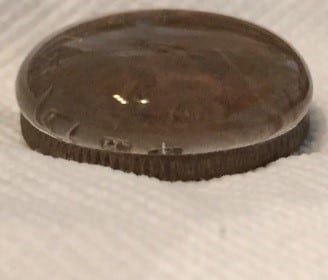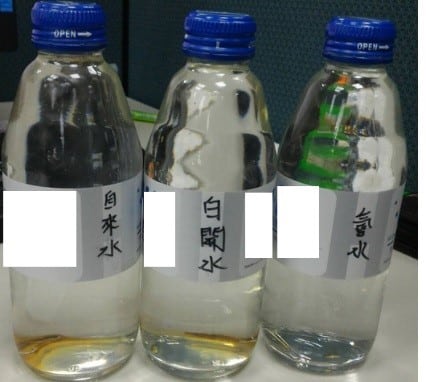低氘氫水實驗室 研究項目
- 極超高純氫氣研究—7N、8N維米製程氫氣
- 固態儲氫器研究、太空船用固態儲氫器研究
- 低氘飽和氫水製程研究及應用研究
- 低氘水用於生物實驗及製藥應用研究
- 氫氣呼吸之劑量及物理效應研究
- 低氘水用於育苗育種農業生技研究
- 氫氣用於食品科學研究
- 低氘水用於食品科學研究
- 呼吸氫氣及低氘飽和氫水之於癌症、中風、巴金森症、妥瑞症、糖尿病、心肌損傷、肝損傷、腦中風、放射治療損傷、老年癡呆、心肌硬塞、痛風、COPD、異位性皮膚炎、僵直性脊椎炎、過敏、紅斑性狼瘡及自體免疫性疾病之觀察研究
這個沒有摘要和全文,只有題目. 有具體內容後再修改. 這說明有人在進行這方面的探討.值得注意
Copyright © 2009 International Society for Heart and Lung Transplantation Published by Elsevier Inc.
135: Combined Administration of Gas and Carbon Monoxide Is a Superior Strategy for Ameliorating Cardiac Cold Ischemia/Reperfusion Injury in Rats Hydrogen
a Heart, Lung and Esophageal Surgery Institute, University of Pittsburgh, Pittsburgh, PA
COMBINED ADMINISTRATION OF HYDROGEN AND CARBON MONOXIDE IS ASUPERIORSTRATEGY FOR AMELIORATIONG CARDIAC COLD ISCHEMIA/REPERFUSION INJURY
Atsunori Nakao, David J Kaczorowski, Ryujiro Sugimoto, Jianghua Zhan, Yinna Wang, Kenneth R McCurry
Thomas E Starzl Transplantation Institute, Department of Surgery, University of Pittsburgh
Department of Surgery, University of Pittsburgh
Background : Hydroxyl radicals, generated during ischemia/reperfusion injury (IRI), play a critical role in graft injury. Recently, it has been reported that hydrogen (H 2) gas alleviates oxidative injury by selectively neutralizing hydroxyl radicals. In this study, we evaluated the combined effects of H 2 with carbon monoxide (CO), a molecule known to have anti-inflammatory and anti-apoptotic properties.
Methods : Syngeneic, heterotopic HTx (LEW rats) was performed with 18 hrs of cold ischemia time. In the H 2or CO treated group, both donor and recipients were treated with H 2(2%) or CO (250 ppm) in air 1 hr before and 1 hr after reperfusion.
Results : In control (air) recipients, serum troponin I (TnI) and CPK levels increased within 3 hrs, but were significantly attenuated with H 2treatment. Cardiomyocyte apoptosis, prevalent in control grafts at 6 hrs, was also significantly attenuated with H 2. H 2treatment resulted in significantly reduced MDA levels after transplant, demonstrating attenuated lipid peroxidation, and also reduced serum high-mobility group box-1 (HMGB1) levels. CO had marginal effects on preventing lipid peroxidation and myocardial oxidative injury. However, CO suppressed inflammatory responses, reducing graft mRNA levels for TNFα and serum IL-6, whereas H 2did not. These results suggest that H 2does not possess direct anti-inflammatory effects, but CO does. Conversely, while H 2has potent anti-oxidant properties, CO has marginal effects in scavenging radicals. Dual therapy with CO and H2demonstrated both anti-oxidant and anti-inflammatory effects.
Conclusion : Mixed gas therapy with CO and H 2is a novel, safe and potent approach for preventing cardiac cold IRI.
Table. The effects of CO and hydrogen for cardiac cold I/R injury (*p<0.05 vs HTx/air)
|
|
TnI (3h) |
CPK (IU/L, 3h) |
TUNEL (6h) |
MDA (3h) |
HMGB1 (1h) |
Serum IL-6 (3h) |
|
normal |
1.1 |
101 |
7.4 |
0.47 |
0.08 |
21 |
|
HTx (air) |
224.7 |
15312 |
55.4 |
0.85 |
4.3 |
928.1 |
|
HTx (CO) |
160.3 |
9171 |
35.2 |
0.83 |
3.8 |
462* |
|
HTx (H 2) |
80.5* |
5458* |
24.3* |
0.65* |
2.6 |
872.1 |
|
HTx (CO/H 2) |
47.5* |
4405* |
22.1* |
0.59* |
2.7 |
206.4* |
具體內容可以參考其一綜述:
J Clin Biochem Nutr. ![]() Links2009 Jan;44(1):1-13. Epub 2008 Dec 27.
Links2009 Jan;44(1):1-13. Epub 2008 Dec 27.
Nakao A , Sugimoto R , Billiar TR , McCurry KR.
Thomas E Starzl Transplantation Institute, University of Pittsburgh, Pittsburgh, PA 15213, USA.
Medical gases are pharmaceutical gaseous molecules which offer solutions to medical needs and include traditional gases, such as oxygen and nitrous oxide, as well as gases with recently discovered roles as biological messenger molecules, such as carbon monoxide, nitric oxide and hydrogen sulphide. Medical gas therapy is a relatively unexplored field of medicine; however, a recent increasing in the number of publications on medical gas therapies clearly indicate that there are significant opportunities for use of gases as therapeutic tools for a variety of disease conditions. In this article, we review the recent advances in research on medical gases with antioxidant properties and discuss their clinical applications and therapeutic properties.
PMID: 19177183 [PubMed – in process]
PMCID: PMC2613492
Available online 24 January 2009.
A. Nakao * , a , DJ Kaczorowski a , R. Sugimoto a , J. Zhan a , Y. Wang a and KR McCurry a
TEL:0963-210-763
email: ddh2water@gmail.com
台灣氫水實驗室部落格:http://blog.xuite.net/hworker77086600/twblog
歡迎來電索取氫水辨認方法(防止喝到傷身的假氫水)
氫水,氫分子、氫氣、健康氫水,水素水,負電位,ORP,抗氧化,抗自由基,氫分子醫學,氫水,Hydrogen water,氫氣、氫,台灣氫水研究中心,氫思語,孫學軍,太田成男,鹼性離子水,小分子水,能量水,電解水,富氫水,負氫水,活水,健康,養生,活力,大氫鬆,小氫鬆,氫水機,水素,水素水機,王群光,氫氧機,綠加利,活美水素水,低氘水,活性原子氫,富氫水,負氫水,每日水素,活氫水,氫氧造水機,百樂,負氫,氫博士,氫水棒,氫源,新德美,HOH,鹼性活氫水,氫美機,負氫離子水,氫氣棒,呼吸氫氣,氫氧療法,加氫水,氫水、健康氫水、水素水、負電位、ORP、抗氧化、抗自由基 、氫分子醫學、氫水、Hydrogen water、氫氣、氫、氫水、台灣氫水實驗室、台灣氫水研究中心、氫思語、孫學軍、太田成男、鹼性離子水、小分子水、能量水、電解水、富氫水、負氫水、活水、健康、養生、活力、大氫鬆、小氫鬆、氫水機、水素、水素水機、王群光、氫氧機、綠加利、活美水素水、低氘水、活性原子氫、富氫水、負氫水、每日水素、活氫水、氫氧造水機、百樂、負氫、氫博士、氫水棒、氫源、新德美、HOH、鹼性活氫水、氫美機、負氫離子
提供玻璃瓶裝飽和氫水供對比,免費兩瓶給你測試,收運費120元。(運費是宅配業者收去的)

